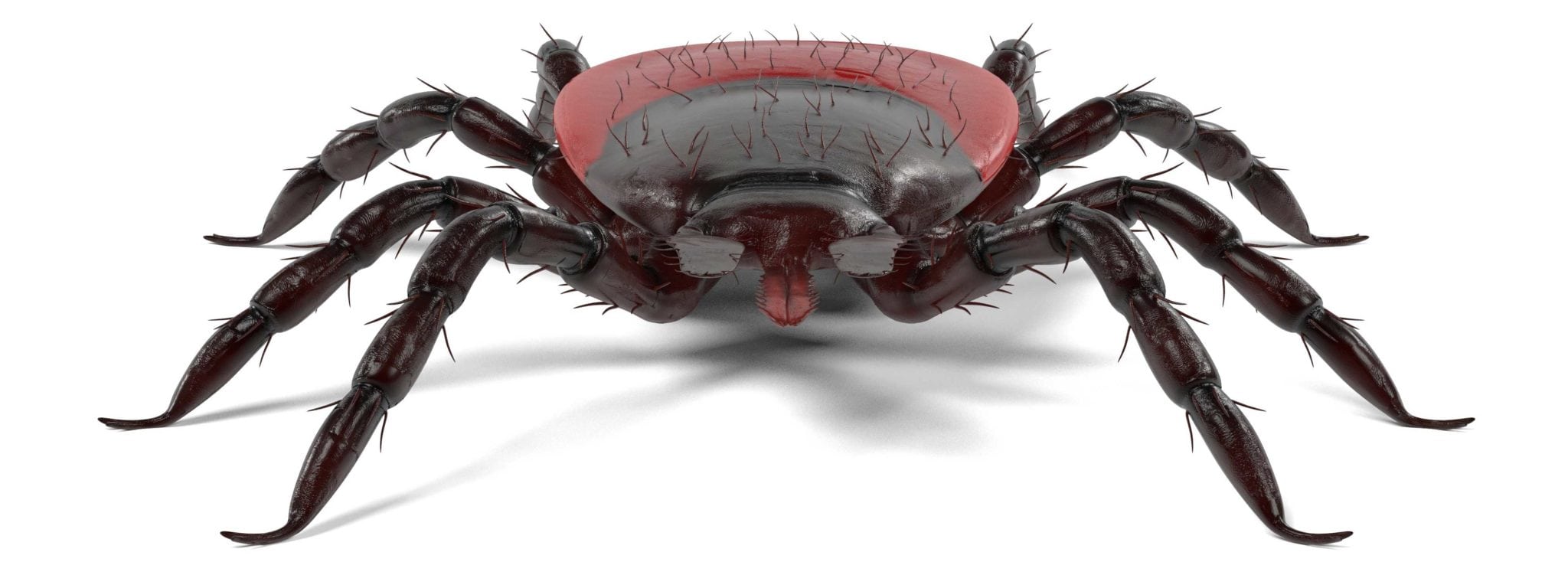The tick built its reputation in Connecticut as a pathogen-carrying menace through the local origins of Lyme disease, but this blood-sucking parasite is no one-trick carrier.
The first case in Connecticut of Powassan Virus, a potentially fatal virus related to West Nile, was confirmed in a recent report by the Centers for Disease Control and Prevention that reviewed the case of Liam Philips of Griswold, infected as a 5-month-old last October by a tick apparently brought into the family home by the boy’s father after a hunting outing.
Common symptoms include fever, headache, vomiting, confusion, seizures, speech difficulties, headache and loss of coordination. The virus can also cause inflammation of the brain (encephalitis) and the membranes that surround the brain and spinal cord (meningitis). There’s no specific cure for Powassan, named after a town in Ontario where the virus was first identified in 1958, but severe cases often require hospitalization, intravenous fluids and respiratory support. The virus can be fatal in up to 10 percent of cases.
An infected tick needs as little as 15 minutes attached to your body to transmit the virus. If that same tick were infected with Lyme disease, it would take up to two days attached to your body to transmit.
Podcast: Preventing Tick-Borne Diseases
https://soundcloud.com/hartford-healthcare/short-preventing-tick-borne-diseases
The CDC lists 15 pathogens causing human disease, including Powassan and Lyme disease, that ticks can carry. About 75 Powassan cases have been reported in the past decade, according to the CDC, with most in the Northeast and Great Lakes region. Lyme disease, which has been traced to a part of Lyme where people reported unusual arthritic symptoms in the mid-1970s, now has an estimated 300,000 new cases nationally each year — a 300 percent increase in the past few decades.
A spike in infected ticks evaluated in late winter at the Connecticut Agricultural Experiment Station testing laboratory portends an active Lyme disease season this year. When the Health News Hub spoke in March with Goudarz Molaei, a research scientist who runs the laboratory, close to half of the ticks submitted tested positive for the Lyme disease agent. In past years, the infection rate has been between 28 percent and 32 percent — with about 27 percent in each of the past five seasons. With more than 800 ticks now tested, the laboratory reports almost 38 percent have tested positive.
Some might dismiss Powassan because of its rarity, but the tick remains a multi-pathogen threat in the state. Here are three other illnesses carried by the same ticks that transmit Lyme disease:
Anaplasmosis
Caused by a bacteria that infects white blood cells, transmitted by a bite that’s usually painless. (It’s likely you won’t even recall getting bitten.)
Symptoms:
- Fever
- Headache
- Chills
- Nausea
- Abdominal pain
- Cough
- Fatigue
- Confusion
Alarm level: Anaplasmosis can be serious, even fatal, without proper treatment. But less than 1 percent of cases are fatal. People with compromised immune systems, whether by chemotherapy, corticosteroids or HIV infection, are susceptible to more severe symptoms.
Treatment: An antibiotic (doxycycline or other tetracyclines) is the go-to treatment for patients. If treated within the first five days, a patient’s fever should subside within 72 hours. But some patients report symptoms, such as headache and fatigue, that last for weeks.
Babesiosis
Caused by a one-cell parasite that infects red blood cells. The parasite is also carried by the white-footed mouse, the most common mouse in the state.
Symptoms (if any):
- Fever
- Chills
- Fatigue
- Body aches
- Nausea
- Loss of appetite
- Hemolytic anemia (when red blood cells are destroyed)
Alarm level: Most people infected by the parasite do not have any symptoms. In time, up to six months, the infection can resolve itself. When treated, doctors often prescribe a combination of quinine and clinamyacin. Antibiotics and other medications also might be used. In severe cases, a patient might require chemotherapy. Babesiosis can become life-threatening for the elderly and people with a weakened immune system, no spleen, liver or kidney disease or other serious health condition.
Rocky Mountain Spotted Fever
Caused by rickettsia bacteria, the same source of typhus. Rocky Mountain Spotted Fever, first reported in the state in 1980, is the longest-reported tick-borne disease in Connecticut even though it is rare. The state Department of Health says an average of three cases are reported each year.
Symptoms (usually two days to two weeks after transmission):
- Rash
- Fever
- Headache
- Nausea
- Vomiting
- Abdominal pain
- Muscle pain
- Loss of appetite
- Conjunctivitis (red eyes)
Alarm level: Rocky Mountain Spotted Fever can be fatal if not treated within the first eight days of infection.
Treatment: Similar to Anaplasmosis, with doxycycline prescribed immediately for both adults and children.
FAQ
Q: Can one tick bite transmit more than one disease?
A: Yes. Co-infection is the medical term for what can happen if you’re bitten by a tick infected with any combination of Lyme disease, anaplasmosis, babesiosis and Rocky Mountain Spotted Fever.
Q: What’s the best way to prevent a tick bite?
A: Wear long pants, long sleeves and light-colored clothing, which makes it easier to detect ticks. Spray exposed skin with a repellant that contains up to 30 percent DEET. A permethrin (0.5 percent) spray works best on clothing, shoes, sneakers and other gear.
Ticks attached to clothing can survive machine washing. To kill any ticks, tumble-dry clothes on high heat for 10 minutes. If the clothes must be washed first, use hot water.
Q: How should I remove a tick embedded in my skin?
A: The CDC recommends fine-tipped tweezers.
- Grasp the tick close to the skin.
- Pull steadily, with even pressure. A twist or other sudden movement could cause the tick’s mouth parts to break off and remain in the skin.
- After removal, clean the area thoroughly with rubbing alcohol, iodine or soap and water.
Need help identifying that rash? Hartford HealthCare/GoHealth Urgent Care is here for you.

